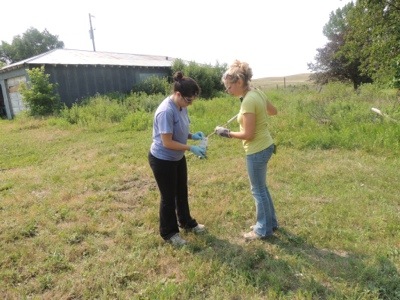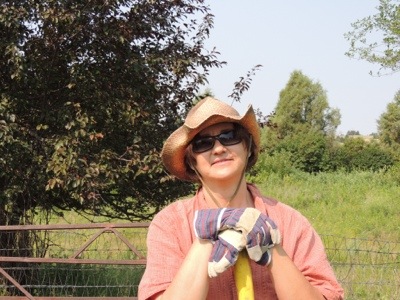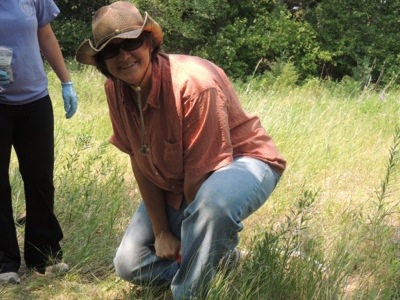The reservations where the Native Americans are placed contain some of the poorest soil in the United States. Additionally, the Lakota people, who ended up in South Dakota on reservations such as Pine Ridge, Rosebud, Cheyenne River, and Standing Rock were nomadic hunters and gatherers; farming the soil was a foreign concept. So not only were the Lakota peoples faced with a new way of life unbeknownst to them, but they had to make a go of it with some of the poorest land available.
The hills roll on in South Dakota; the underlying geology is covered by a soil that is incredibly sand-rich. The Pine Ridge Reservation is located towards the northern edge of the Sand Hills (in Nebraska the Sand Hills are part of a National Park). So the land in Pine Ridge is pretty poor for farming. There are some larger farms on the reservations, mostly owned by white farmers. They raise mostly wheat or some corn. They must fertilize the heck out of it, to make it productive, otherwise it would just be grassland for cattle, filled with prairie grass.
We took soil samples at two different geographical locations. The first was at Feather II, the new site for Re-member. We sampled in a few different locations (1) an are near the old ranch house, (2) in a field which used to have a large garden, (3) in the pole barn – this is just for soil contamination, and (4) a pasture area behind the outbuildings. Ted, the director of the Re-member group in Pine Ridge would like to put a large garden in at the new site. Most likely in the spot where the original garden was placed. We then came back to Re-member in Pine Ridge and sampled the current garden.
We were able to run some quick tests on two soil samples before leaving Re-member. We tested the soil from the field at Feather II that used to have a garden and the garden soil from Re-member. Both were incredibly sandy, both had very little nitrogen. The soil was pretty poor in general at the Re-member site, low in all the nutrients (N, P, and K) that are important in growing a successful garden. The soil we tested from Feather II was a little better, but not by much. The soil will have to be treated aggressively for growth to happen.
So….we gave their compost a good turn over. They just started some composting at the site, it needs helped. Two other members that were here collected some horse manure for the compost; composting became a team effort. We also have been educating the staff and volunteers at Re-member about composting. Another suggestion we have suggested is that the staff make a manure tea for the garden. A manure tea is simply cow/horse/buffalo manure steeped in water and left in the sun to heat. The liquid is poured off and added to the garden. The last resort, and perhaps the one that was met with the most amusement was to urinate on the garden. It would certainly add the nitrogen back into the soil!
Kate and Lauren sampling soil at Feather II.
In soil sampling mode.
Some of the sampling locations had quite a hard layer of soil at the surface from the lack of precipitation.



